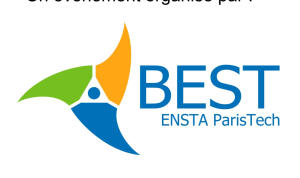A World of Words and Wonders
In an increasingly digital world, there’s a timeless charm to the tangible. The crisp pages of a new book, the satisfying glide of a quality pen, the vibrant colors of a fresh set of paints—these aren’t just products; they’re experiences. For entrepreneurs looking to dive into the world of e-commerce, selling books and stationery offers a unique opportunity to connect with a passionate community of readers, artists, students, and professionals.
The market is vast, but the potential for a dedicated, niche-focused business is even greater. This guide will walk you through everything you need to know, from finding your target audience to building a brand that customers will love and return to.
Finding Your Niche: It’s Not Just About Books
The biggest mistake a new seller can make is trying to be everything to everyone. Instead of competing with giants like Amazon or Barnes & Noble, focus on a specific niche. This allows you to curate a unique collection and become a go-to destination for your target audience.
Consider these ideas:
- Rare & First Editions: Appeal to collectors with a deep knowledge of literature. You can specialize in a specific genre like sci-fi, fantasy, or classic American literature.
- Children’s Books & Educational Stationery: This market is always growing. Parents and educators are constantly looking for engaging, high-quality products. You could focus on bilingual books, STEM-related activity kits, or eco-friendly school supplies.
- Art & Design Supplies: Combine art books with high-end stationery like journals, sketchbooks, fountain pens, and watercolors. This attracts a creative community looking for tools to bring their ideas to life.
- Used & Vintage: Offer pre-loved books and stationery. This not only appeals to budget-conscious shoppers but also taps into the sustainability movement. You can market your store as an eco-friendly alternative.
- Travel & Lifestyle: Curate a collection of travel guides, nature books, and stylish journals, planners, and travel accessories.
By choosing a niche, you can create a more personal brand identity and build a loyal following.
Building Your Brand: Storytelling Sells
In the world of selling books and stationery, the story is everything. Your brand’s story is what will differentiate you from the competition.
- Define Your “Why”: Why are you passionate about books and stationery? Are you a lifelong reader, an avid artist, or a former teacher? Share your story on your “About Us” page. This builds trust and rapport with your customers.
- Create a Unique Aesthetic: Your brand’s visual identity should reflect your niche. If you sell vintage books, your website and packaging could have a rustic, old-world feel. For modern stationery, use clean lines and minimalist design.
- High-Quality Photography: This is non-negotiable. High-resolution, well-lit photos are crucial, especially for stationery where texture and detail matter. Showcase products from multiple angles and in a lifestyle context (e.g., a notebook on a coffee table with a cup of tea).
- Write Compelling Product Descriptions: Don’t just list the features. Tell a story. Instead of “A notebook with lined pages,” try something like, “Capture your thoughts and dreams on these smooth, cream-colored pages, perfect for journaling or sketching on the go.”
Setting Up Your Online Store: The Foundation of Your Business
Choosing the right platform is the first major step. Popular options include:
- Shopify: Known for its ease of use, robust features, and extensive app store. It’s a great choice for beginners and growing businesses.
- WooCommerce: A plugin for WordPress, offering more customization but a steeper learning curve. It’s ideal for those who already have a WordPress site.
- Etsy: Perfect for sellers of vintage items, handmade goods, and unique stationery. The platform has a built-in community of buyers, but the competition can be high.
Image: A close-up shot of a stack of books with a stylish fountain pen resting on top.
Regardless of the platform, remember to optimize your store for mobile devices, as a significant portion of online shopping now happens on smartphones.
Marketing Your Products: Reaching Your Audience
Once your store is live, you need to attract customers.
- Content Marketing: Create valuable content that resonates with your niche.
- Blog: Write articles like “5 Books to Read on a Rainy Day” or “The Best Pens for Bullet Journaling.” This not only helps with SEO but also establishes you as an authority.
- Social Media: Instagram and Pinterest are visual platforms that work perfectly for books and stationery. Post stunning product shots, share quotes from books, or run a “journaling challenge.”
- Email Marketing: Build an email list from day one. Send newsletters with new product alerts, exclusive discounts, and behind-the-scenes content.
- Search Engine Optimization (SEO): Optimize your product titles and descriptions with relevant keywords. Think like a customer: What would they type into Google to find your products?
- For example, instead of “Notebook,” use “Hardcover A5 Dotted Notebook for Bullet Journaling.”
- Collaborate: Partner with book bloggers, “Bookstagrammers,” or “BookTubers” for reviews and promotions. For stationery, collaborate with artists or calligraphers.
The Power of Community: Creating a Customer-Centric Business
The most successful businesses don’t just sell products; they build a community.
- Exceptional Customer Service: Respond to inquiries promptly and handle returns with grace. A happy customer is a repeat customer.
- Personal Touches: Include a handwritten thank-you note with every order. This small gesture goes a long way in building brand loyalty.
- Encourage Reviews: Ask customers to leave reviews on your site. This builds social proof and helps other shoppers feel confident in their purchase.
- Run Contests & Giveaways: Host a social media contest where people share a photo of their new book or stationery, tagging your brand for a chance to win a prize. This generates user-generated content and buzz.
The Transaction: A Seamless Experience
Make the checkout process as simple as possible.
- Clear Shipping Information: Be transparent about shipping costs and delivery times. Offer a variety of shipping options if possible.
- Multiple Payment Options: Accept major credit cards, PayPal, and other popular payment gateways.
- Secure Checkout: Ensure your website has an SSL certificate to protect customer data.
Conclusion
Selling books and stationery is more than just a business; it’s a way to share a passion for learning, creativity, and the simple joy of a physical object. By finding your niche, building a strong brand, and focusing on creating a positive customer experience, you can turn your love for the written word and art supplies into a thriving, profitable business. The journey may be challenging, but the opportunity to connect with a community of like-minded individuals is a reward in itself.






